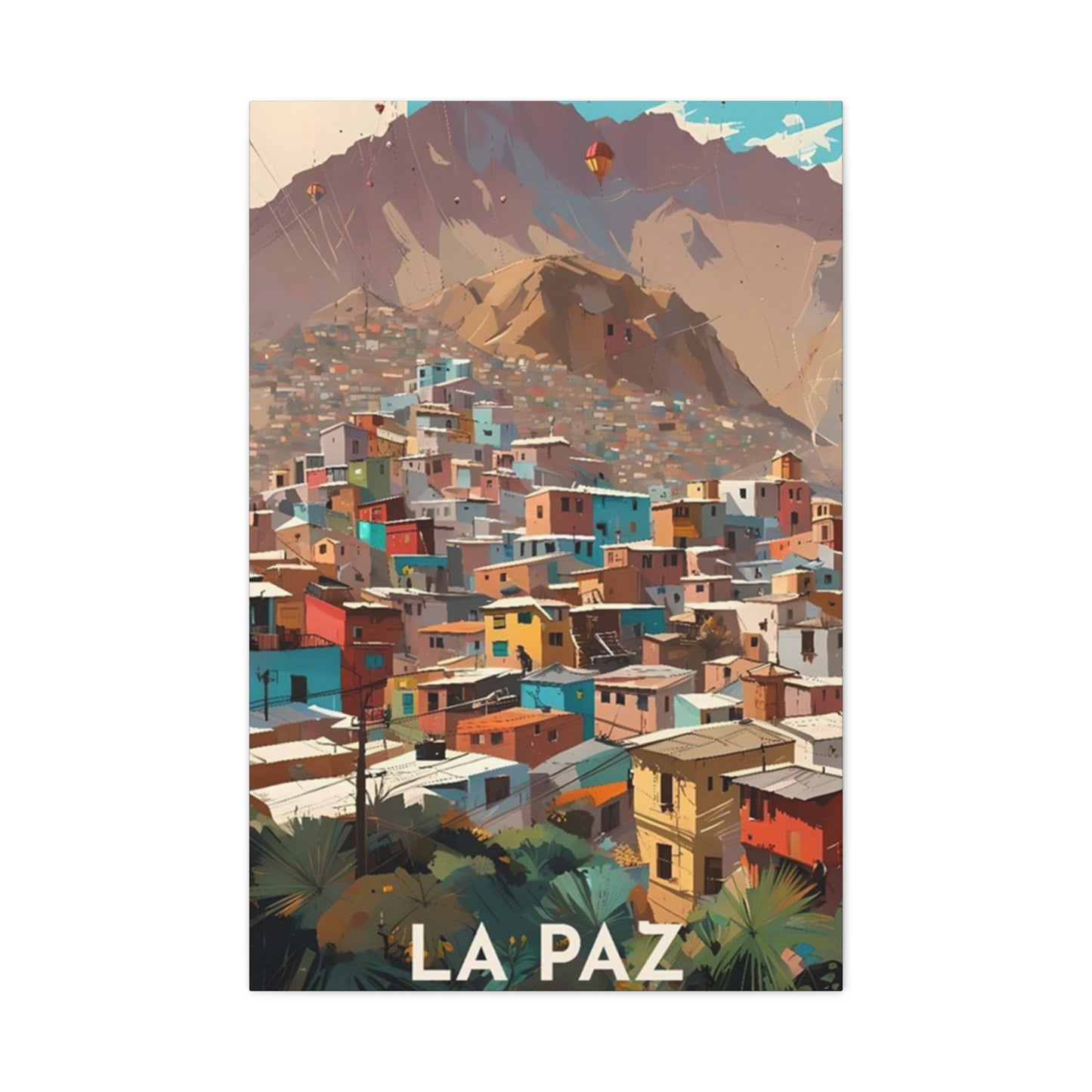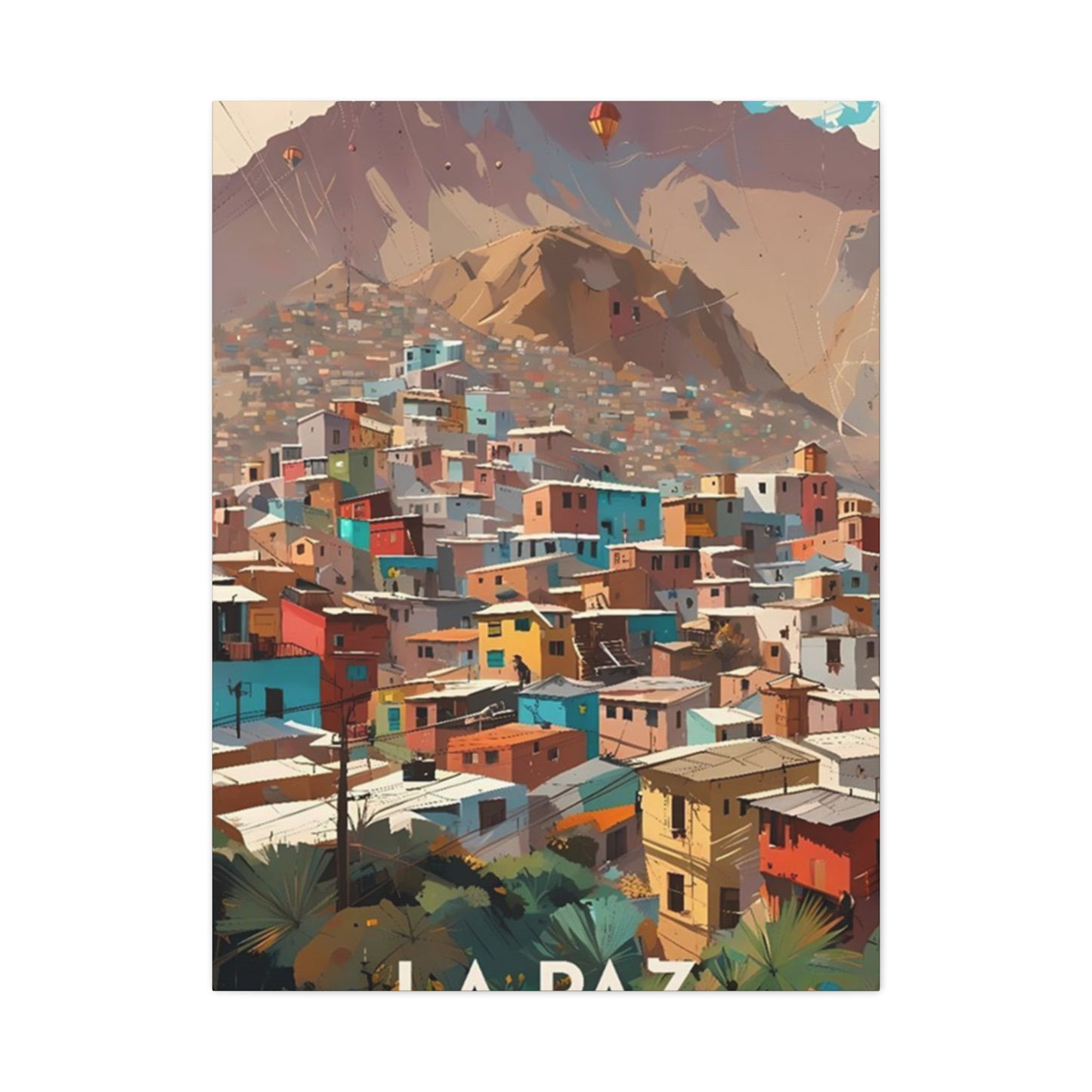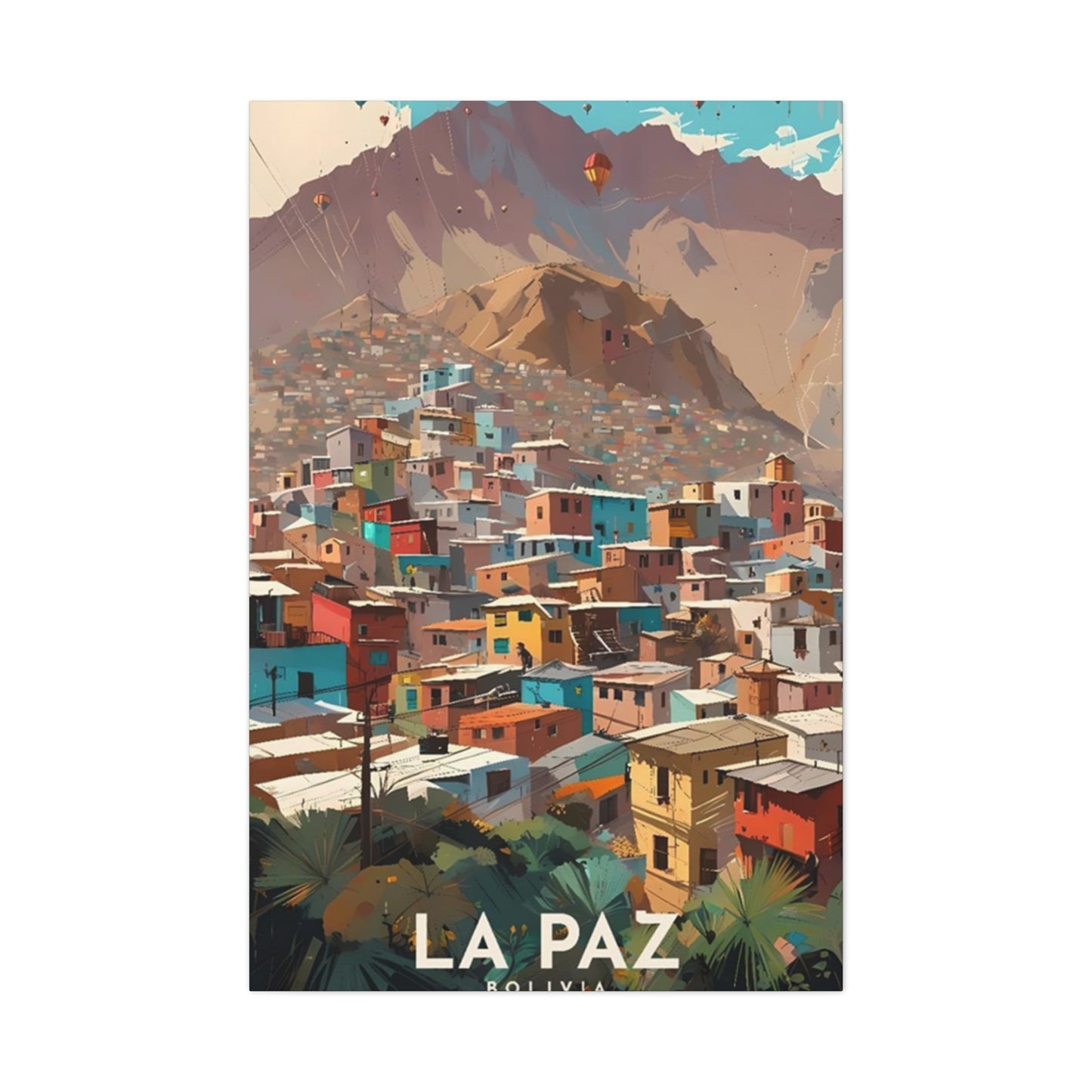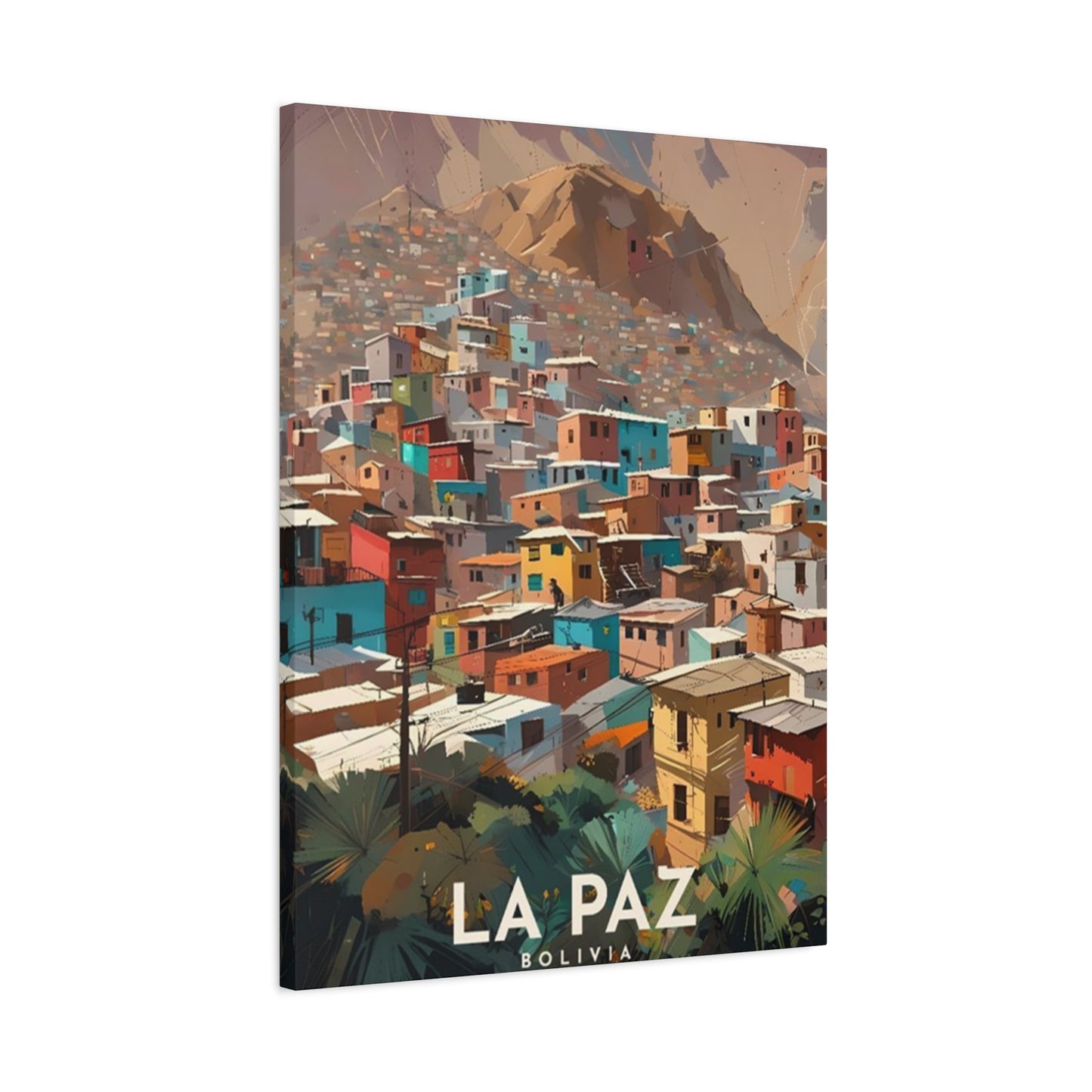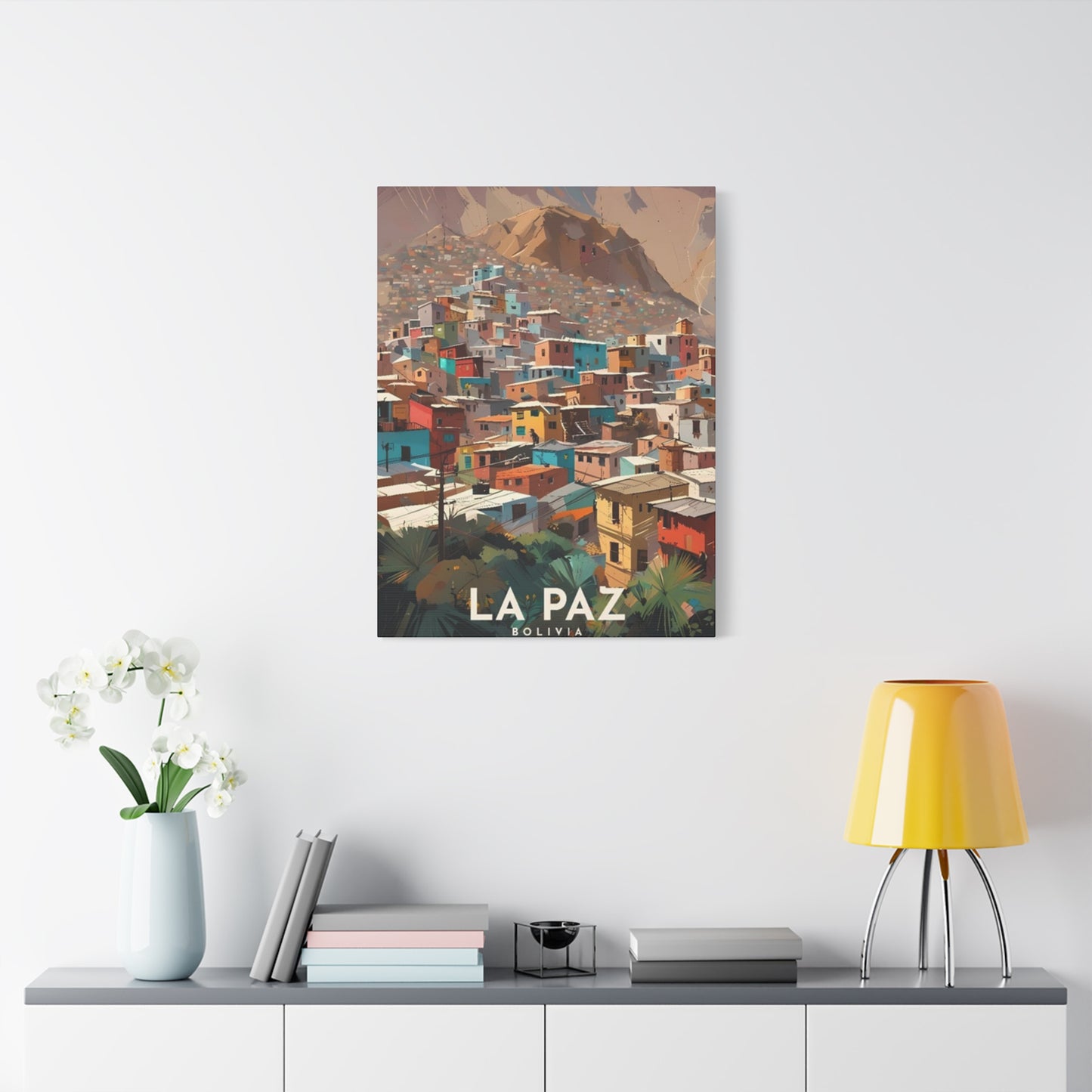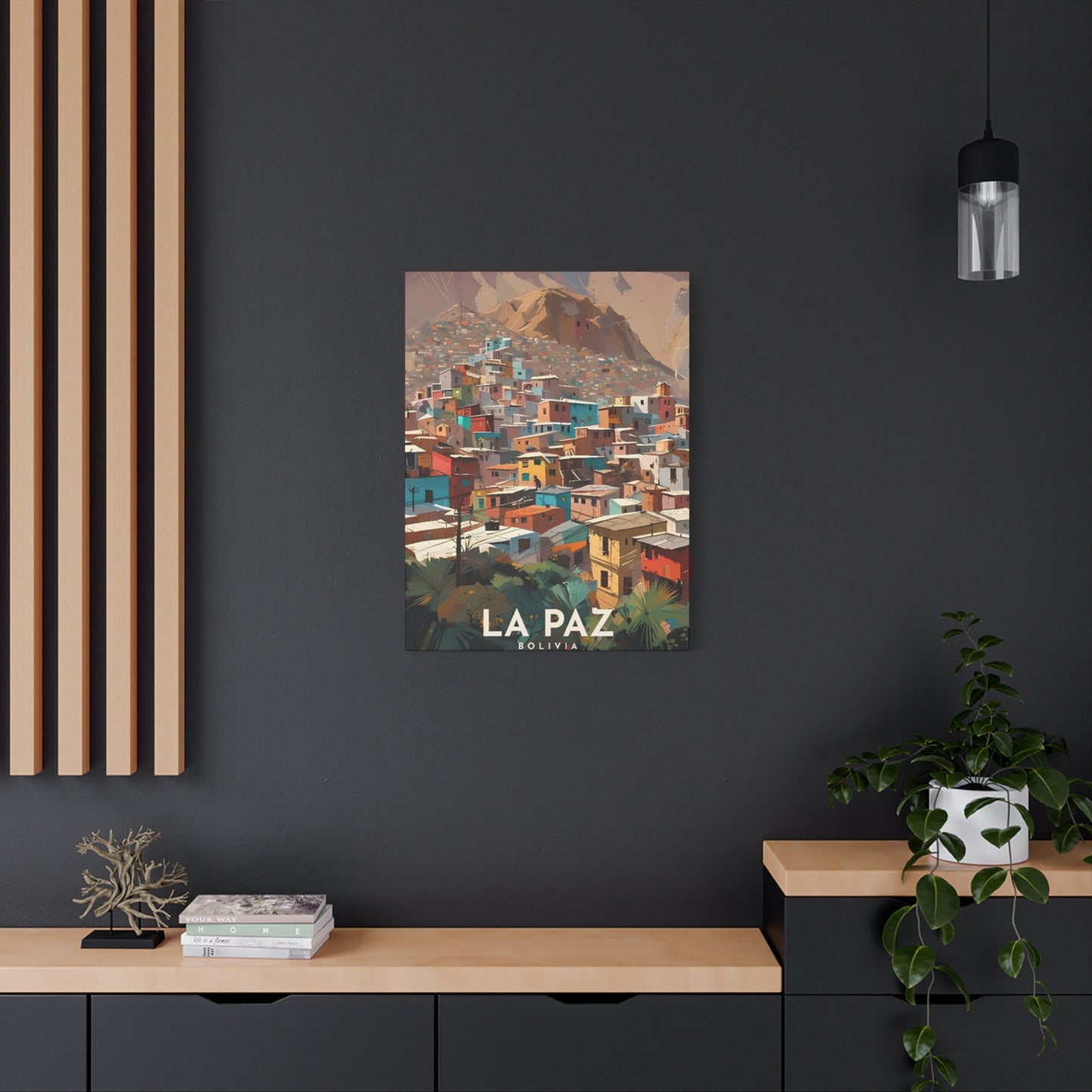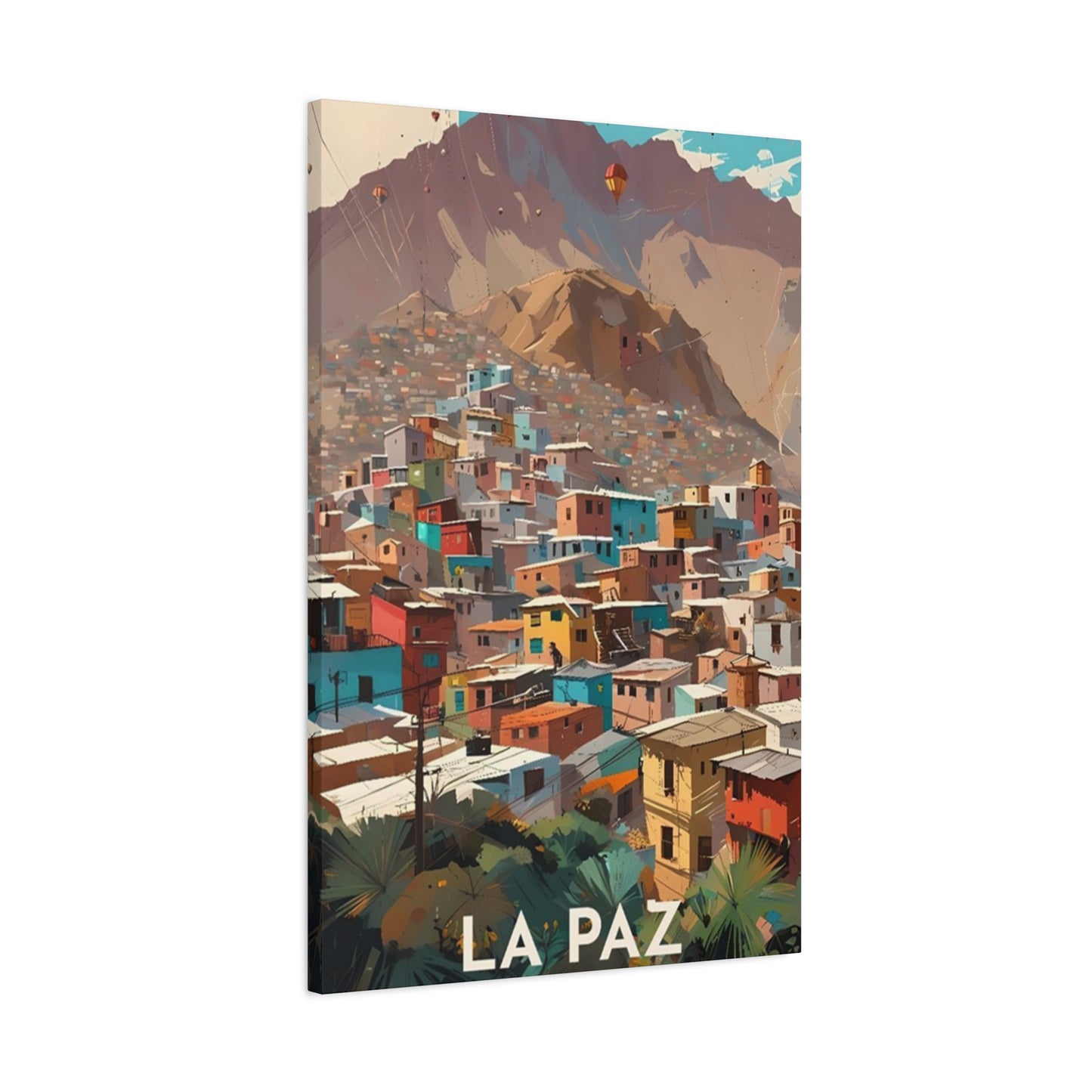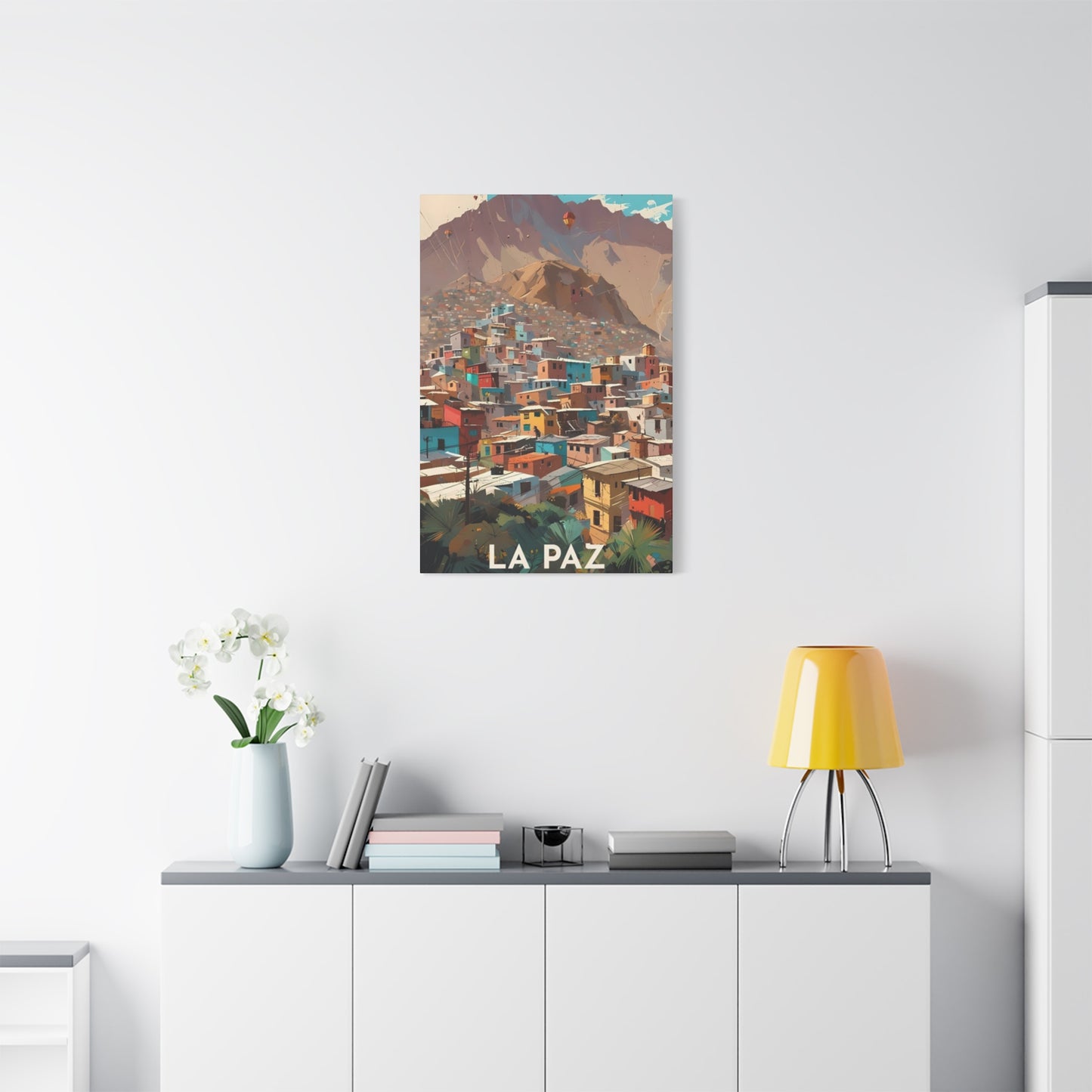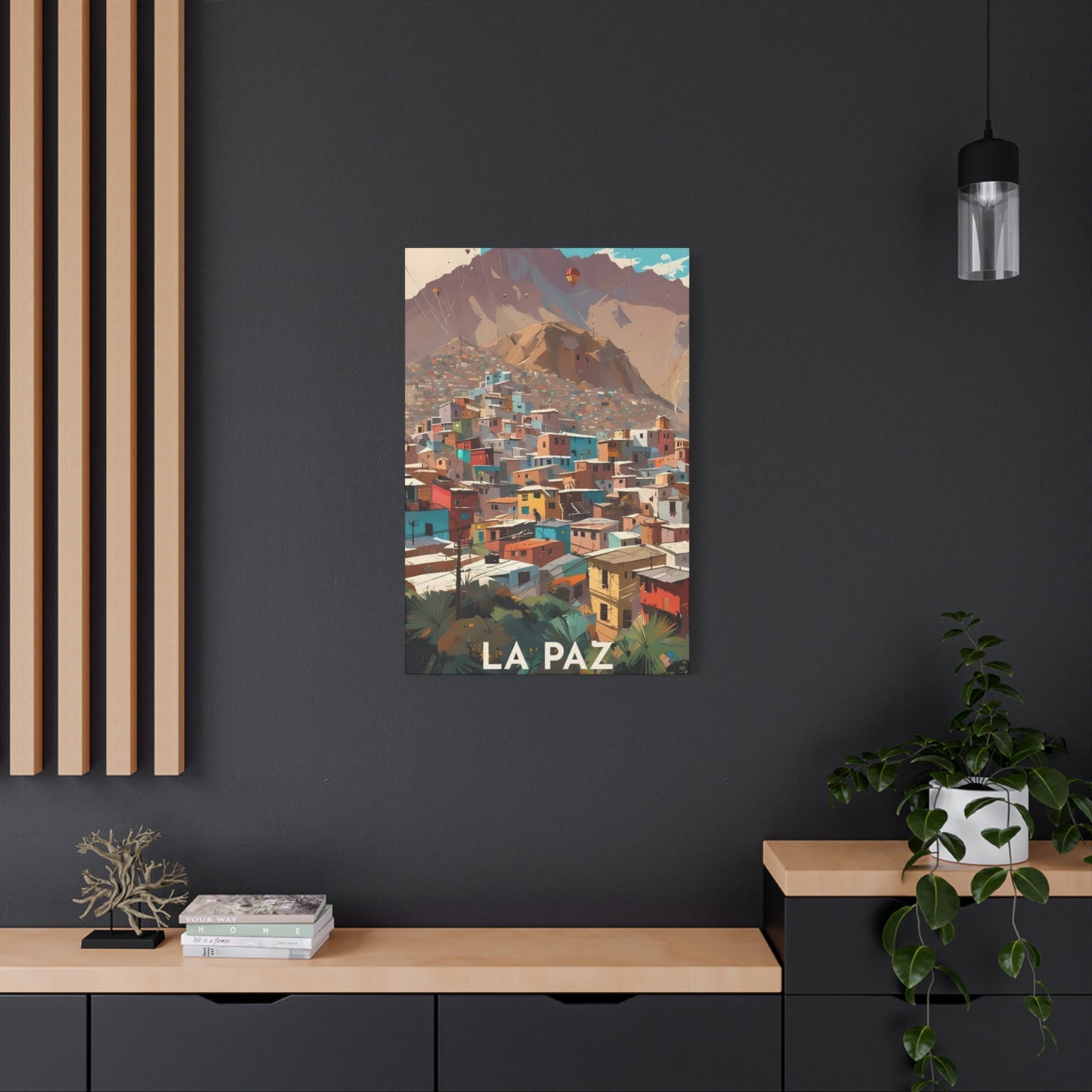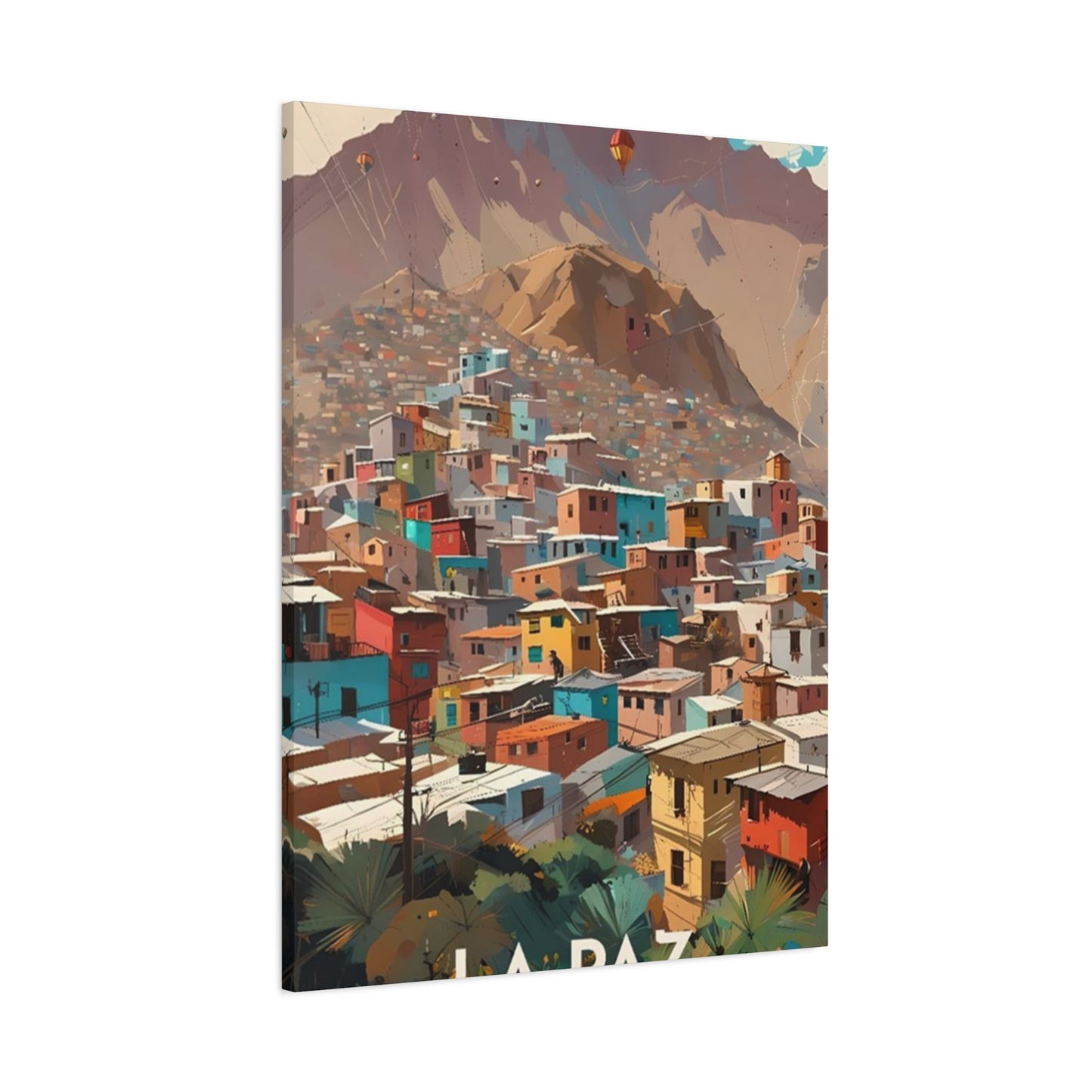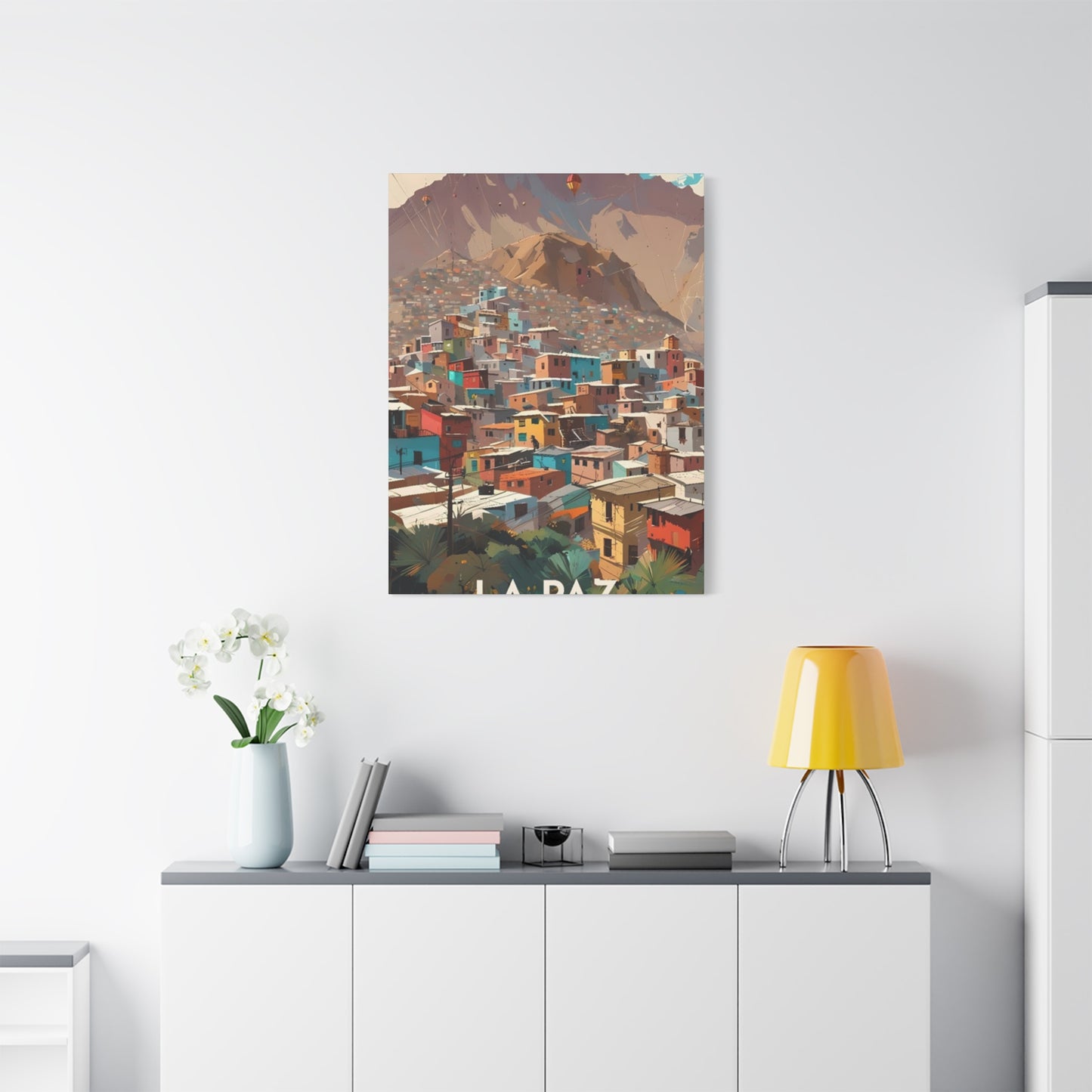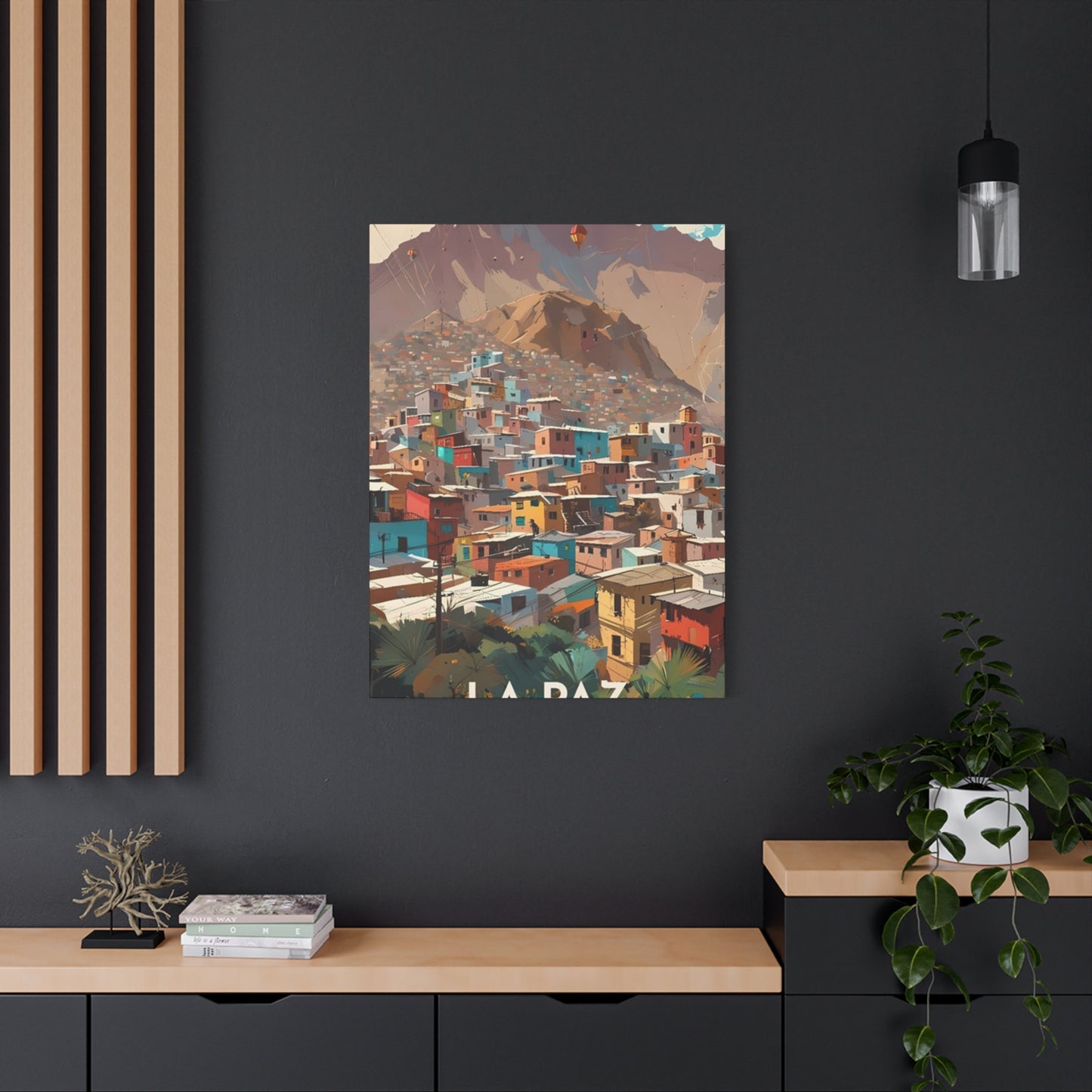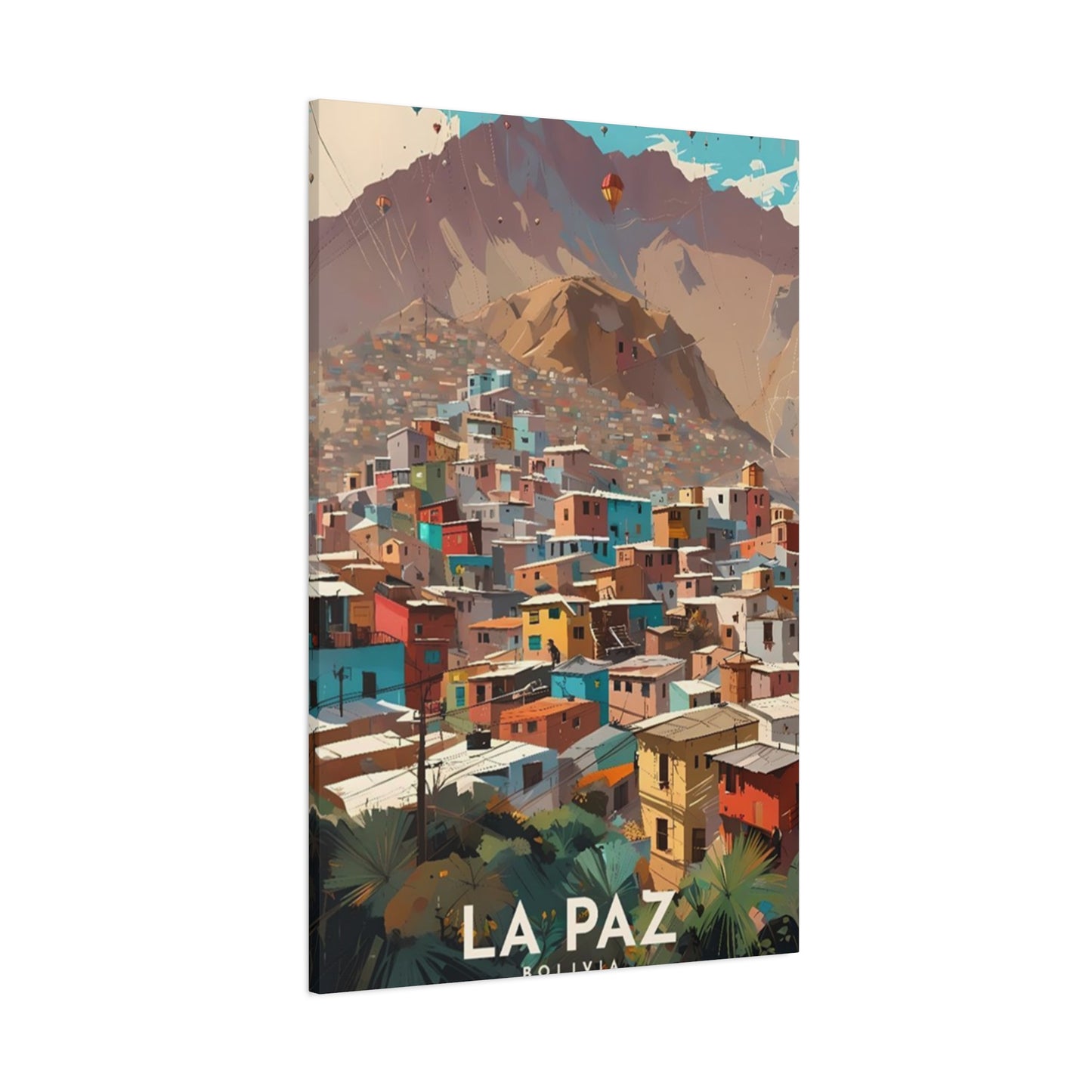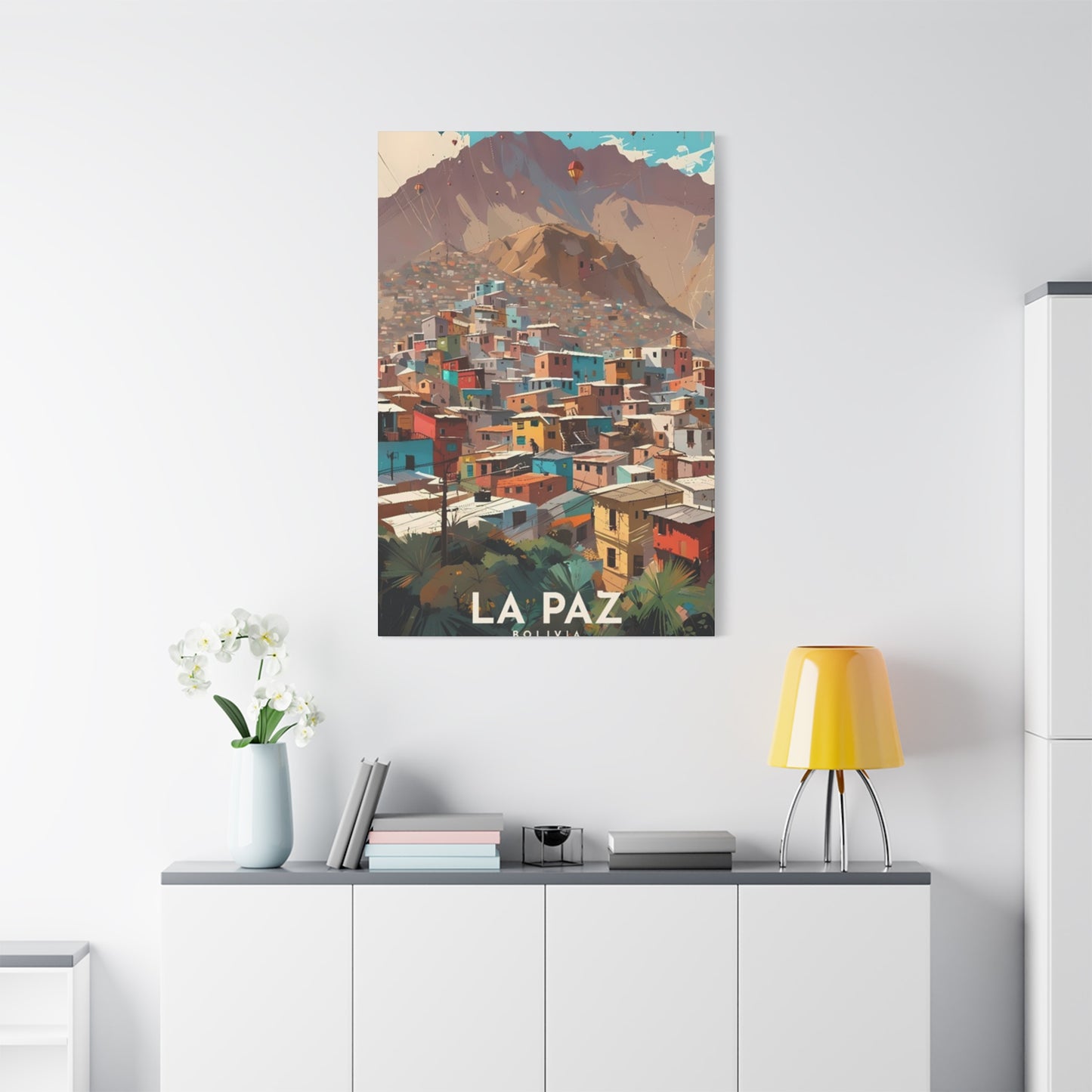La Paz, Bolivia Wall Art Décor: The Complete Guide to Bolivian Aesthetic Expression
Nestled among the towering peaks of the Andes Mountains, the administrative capital of Bolivia stands as a testament to human resilience and creative expression. This remarkable city, perched at breathtaking altitudes, offers an unparalleled visual feast that captivates artists, photographers, and cultural enthusiasts from around the globe. The metropolis presents a unique blend of indigenous traditions, colonial influences, and contemporary urban energy that translates magnificently into decorative pieces for residential and commercial spaces.
The artistic representations emerging from this high-altitude urban center capture something profoundly authentic about South American culture. Every brushstroke, photograph, and design element reflects centuries of history, the daily rhythms of market vendors, the architectural splendor of colonial buildings contrasting with modern structures, and the ever-present majesty of snow-capped peaks forming a dramatic backdrop to city life. When these visual elements are transformed into decorative pieces, they carry with them the essence of a place where earth meets sky in spectacular fashion.
Interior designers and homeowners seeking distinctive decorative elements increasingly turn to artwork inspired by this Andean metropolis. The appeal extends beyond mere aesthetics; these pieces serve as conversation starters, cultural bridges, and windows into a world that many will never physically visit but can appreciate through artistic interpretation. The color palettes alone distinguish these works from conventional interior décor, featuring earthy terracottas, vibrant market hues, deep sky blues, and the varied greens of valley vegetation.
Contemporary collectors appreciate how these artistic pieces bring global perspective into living spaces. In an era of mass-produced decoration, artwork reflecting genuine cultural heritage offers something increasingly valuable: authenticity. Each piece tells stories of indigenous women in traditional dress navigating steep cobblestone streets, cable cars gliding above densely packed neighborhoods, and markets bursting with textiles, produce, and handicrafts that have changed little over generations.
The transformation of this city's visual character into home décor represents more than aesthetic choice; it reflects a growing appreciation for cultural diversity and global interconnectedness. Modern homeowners seek to create environments that reflect their values, travels, and worldview. Decorative pieces inspired by this remarkable location accomplish precisely that, offering daily reminders of humanity's capacity to build thriving communities in the most challenging environments while maintaining rich cultural traditions.
Showcasing South American Elegance Through Interior Design
The distinctive aesthetic qualities originating from Bolivia's administrative center have become increasingly prominent in contemporary interior design trends. Design professionals recognize the unique visual signature these pieces bring to residential and commercial spaces, offering alternatives to overused European or North American design motifs. The architectural landscape of this high-altitude city, with its dramatic vertical development cascading down canyon walls, provides endless inspiration for artistic interpretation.
Homeowners incorporating these decorative elements discover immediate transformation in their living environments. The bold color contrasts characteristic of this region's visual culture inject energy into neutral spaces, while the cultural depth prevents these vibrant hues from appearing superficial or merely trendy. Design experts particularly value how these pieces complement both modern minimalist interiors and more traditional design schemes, demonstrating remarkable versatility across aesthetic contexts.
The geographical setting contributes significantly to the visual appeal of artwork from this region. Few cities worldwide can claim such dramatic topographical circumstances, with urban development extending from canyon floors to ridge tops, creating layered cityscapes that photographers and artists find endlessly fascinating. When captured effectively, these vertical perspectives translate into wall décor that draws the eye and creates focal points within interior spaces.
Cultural authenticity represents another compelling dimension of these decorative pieces. Unlike generic travel photography or mass-produced prints, artwork reflecting this Bolivian city's character carries genuine cultural weight. The indigenous populations who have inhabited these mountains for millennia continue shaping the city's visual identity through traditional dress, market practices, and architectural preferences. This living cultural heritage distinguishes these pieces from mere landscape photography or generic urban imagery.
Interior designers increasingly recommend these artistic pieces for clients seeking to communicate specific values through their living spaces. The selection of such décor suggests cultural curiosity, appreciation for indigenous traditions, environmental consciousness related to mountain ecosystems, and recognition of beauty in non-Western contexts. These subtle messages conveyed through design choices help create living environments that authentically reflect occupant identities and values.
The practical considerations of incorporating these pieces into existing design schemes prove surprisingly straightforward. The natural color palettes found in representations of this region coordinate well with earth-tone furnishings, while the vibrant market colors complement contemporary accent pieces. The dramatic mountain backdrops provide natural contrast against urban furniture styles, creating visual interest without requiring extensive design adjustments. This adaptability contributes to the growing popularity of these decorative elements across diverse interior design contexts.
Chromatic Pathways Through Bolivia's Urban Heart
The thoroughfares winding through the administrative capital present some of the most photographically compelling urban landscapes in South America. These passages, often steep and narrow, showcase architectural diversity ranging from colonial-era churches to contemporary glass structures, all united by the distinctive visual character that makes this city unmistakable. Artists capturing these scenes preserve not just physical structures but the lived experience of millions navigating this vertical metropolis daily.
The chromatic richness of these urban pathways stems from multiple sources. Market vendors display textiles in every conceivable hue, from deep indigos derived from traditional dyeing techniques to brilliant reds and yellows that catch sunlight streaming between buildings. Building facades, painted in colors reflecting both Spanish colonial preferences and indigenous aesthetic sensibilities, create patchworks of visual interest at every turn. Even the sky contributes distinctive coloration, with altitude affecting atmospheric conditions to produce unusually clear blues and dramatic cloud formations.
Photographers specializing in this region understand that timing dramatically affects the visual character of street scenes. Morning light illuminates eastern-facing walls while casting western districts in shadow, creating strong contrasts that emphasize the city's dramatic topography. Late afternoon brings golden-hour illumination that warms terracotta roofs and adobe walls, while evening transforms the cityscape into a glittering display of artificial lights punctuating mountain darkness. Each temporal moment offers distinct aesthetic possibilities for artistic capture.
The human element within these urban pathways adds essential vitality to artistic representations. Indigenous women in traditional multilayered skirts and bowler hats navigate steep inclines with remarkable grace, often carrying impossibly large bundles on their backs. Street vendors arrange their wares with unconscious artistry, creating compositions of fruits, vegetables, and handicrafts that rival gallery installations. Children play in plazas, workers hurry to appointments, and elderly residents pause to chat, all contributing to the authentic street life that distinguishes genuine cultural documentation from staged tourism photography.
Wall décor featuring these chromatic pathways brings unexpected dimensions to interior spaces. Unlike conventional landscape photography that might fade into background awareness, these street scenes maintain visual interest through their complexity and cultural richness. Viewers discover new details with repeated observation, whether architectural flourishes on colonial buildings, patterns in textile displays, or interactions between people navigating shared urban space. This sustained engagement makes such pieces particularly valuable in spaces where occupants spend significant time.
The artistic challenge in representing these pathways lies in capturing their essence without overwhelming viewers with visual chaos. Skilled photographers and artists employ compositional techniques that guide attention while preserving the complexity that makes these scenes fascinating. Leading lines created by street perspectives, framing through architectural elements, and selective focus that emphasizes certain details while softening others all serve to translate three-dimensional urban experience into effective two-dimensional artistic representation.
Contemporary appreciation for these street scenes reflects broader cultural shifts toward valuing authentic urban experience over sanitized or idealized representations. Modern audiences increasingly seek art that acknowledges life's complexity, cultural diversity, and the beauty found in everyday settings rather than exclusively in pristine natural landscapes or carefully curated tourist perspectives. The pathways through this Andean city offer precisely this combination of authentic lived experience and undeniable visual appeal.
Metropolitan Appeal Captured in South American Artistic Expression
The urban sophistication present in Bolivia's administrative center challenges conventional expectations about developing world cities. This metropolis boasts world-class museums, thriving culinary scenes, vibrant nightlife districts, and architectural innovations that have earned international recognition. Contemporary artists capturing this metropolitan dimension reveal a city confidently navigating between tradition and modernity, creating visual narratives that resonate with global urban audiences while maintaining distinctive regional character.
The cable car system, one of the world's most extensive urban transit networks, exemplifies the fusion of practical infrastructure and visual spectacle. These aerial gondolas, gliding above densely packed neighborhoods, provide both transportation solution and tourist attraction, offering perspectives on the city that ground-level photography cannot capture. Artistic representations featuring this transit system symbolize progress, connectivity, and innovative approaches to urban challenges specific to extreme topographical conditions.
Modern architectural developments within the city demonstrate sophisticated design sensibilities that translate effectively into contemporary wall art. Glass-fronted buildings reflect mountain landscapes and sky conditions, creating dynamic facades that change throughout the day. Innovative use of local materials in contemporary construction maintains connection to regional building traditions while achieving decidedly modern aesthetic results. These architectural subjects appeal particularly to homeowners and designers seeking art that bridges traditional and contemporary design vocabularies.
The nighttime urban landscape offers entirely different aesthetic possibilities than daytime photography. When darkness descends, artificial lighting transforms the cityscape into a constellation of illuminated points cascading down mountainsides. Long-exposure photography captures light trails from vehicles navigating steep roads, creating dynamic compositions that convey urban energy and movement. These nocturnal representations appeal particularly to collectors seeking dramatic, contemporary pieces with strong visual impact.
Cultural institutions within the city provide rich subject matter for artistic documentation. Museums housing pre-Columbian artifacts, colonial religious art, and contemporary Bolivian works offer interior spaces that photographers and artists find visually compelling. Performance venues hosting traditional music and dance, as well as contemporary cultural events, present opportunities to capture cultural vitality in action. These institutional subjects add intellectual dimension to decorative art, suggesting engagement with knowledge production and cultural preservation.
The commercial districts of the metropolis showcase entrepreneurial energy and economic vitality often overlooked in representations of developing world cities. Modern shopping districts, traditional markets, and innovative hybrid commercial spaces demonstrate the economic complexity of contemporary urban life in this region. Artistic documentation of these commercial environments challenges simplified narratives about economic development while providing visually interesting subjects rich in human activity and architectural diversity.
Public spaces within the city, from colonial-era plazas to modern parks, serve as stages for daily life that artists find endlessly fascinating. These gathering places host everything from political demonstrations to cultural festivals, informal markets to relaxation activities. Capturing these public space dynamics requires sensitivity to social context and photographic skill in documenting spontaneous human interaction. The resulting artwork brings authentic urban social experience into residential settings, creating connections between private domestic space and public civic life.
Andean Peaks and Market Culture in Visual Representation
The relationship between towering mountain landscapes and bustling market culture defines much of this region's distinctive character. These two elements, seemingly disparate, actually function as complementary forces shaping daily life and visual identity. Markets often occupy public spaces with mountain vistas as backdrops, creating juxtapositions of human commercial activity against timeless geological formations. Artists capturing these combinations preserve essential truths about life in high-altitude Andean urban environments.
Traditional market culture in this region extends back centuries, with indigenous trading practices adapting to but never completely conforming to European commercial models introduced during colonial periods. Contemporary markets maintain remarkable continuity with historical precedents, featuring similar products, trading practices, and social functions. This cultural persistence makes markets particularly valuable subjects for artistic documentation, as they represent living traditions rather than historical recreations or tourist performances.
The visual abundance of market scenes presents both opportunity and challenge for artists. Produce displays featuring dozens of potato varieties in colors from cream to deep purple, textile stalls showcasing intricate weaving patterns, and handicraft vendors offering everything from miniature alpacas to elaborate ceremonial items create almost overwhelming visual complexity. Successful artistic representation requires selectivity and compositional skill to create coherent images from this abundance while preserving the essential character of market vitality.
Mountain backdrops visible from market locations add dramatic scale and environmental context to these commercial scenes. Snow-capped peaks rising behind vendor stalls remind viewers that this commercial activity occurs at extreme altitude, in conditions that would challenge European or North American market traditions. This environmental framing adds layers of meaning to market documentation, suggesting human adaptation, resilience, and the continuation of cultural practices despite challenging circumstances.
The social dimensions of market culture provide essential human elements for artistic representation. Markets function not merely as commercial spaces but as social centers where communities gather, information exchanges, and cultural identity reinforces itself through shared practices. Elderly vendors who have occupied the same market stalls for decades become local landmarks themselves, their weathered faces and traditional dress embodying cultural continuity. Photographers capturing these human elements create portraiture as much as documentary photography.
Seasonal variations in market offerings provide artistic opportunities throughout the year. Agricultural products reflect Andean growing cycles, with distinct items appearing as different crops reach harvest. Festival periods bring specialized market goods, from miniature items for the Alasitas festival to cemetery decorations for Day of the Dead observances. These seasonal shifts allow artists to document cultural calendar rhythms through market subjects, creating series that collectively represent annual cultural cycles.
The integration of market imagery into contemporary home décor serves multiple functions. Aesthetically, market scenes provide color, pattern, and visual interest that enliven interior spaces. Culturally, they signal appreciation for indigenous traditions and sustainable local commerce. Philosophically, they represent alternatives to impersonal corporate retail models, celebrating human-scale economic interaction and community-based commerce. These multiple dimensions make market-themed artwork particularly meaningful for homeowners seeking decorative pieces with substantive content.
Heritage Expressions Through Andean Visual Culture
The cultural legacy preserved and actively maintained in this region provides inexhaustible inspiration for artistic creation. Indigenous traditions that predate European contact continue shaping visual culture, from textile patterns encoding cosmological beliefs to color preferences reflecting agricultural cycles and ritual practices. Contemporary artists working with these cultural elements navigate complex questions about authenticity, appropriation, and the distinction between cultural appreciation and exploitation.
Traditional textile arts from this region rank among the world's most sophisticated weaving traditions. Patterns passed through generations encode information about community identity, social status, and spiritual beliefs. The technical skill required to produce these textiles using traditional methods commands respect from textile experts worldwide. When these patterns appear in artistic representations or inspire contemporary design, they carry cultural weight that transcends mere aesthetic appeal.
Ritual practices maintained by indigenous communities provide glimpses into worldviews fundamentally different from Western paradigms. Ceremonies honoring Pachamama, offerings at mountain peaks, and festival traditions blending Catholic and indigenous elements create visual spectacles rich in meaning for participants and fascinating for outside observers. Artists documenting these practices face ethical responsibilities to represent cultural traditions respectfully while creating work accessible to audiences unfamiliar with specific cultural contexts.
Architectural heritage from colonial periods presents another dimension of cultural complexity. Churches built by Spanish colonizers using indigenous labor display architectural styles transported from Europe but adapted to local conditions and materials. The artistic and cultural value of these structures coexists with uncomfortable historical realities about colonial exploitation. Contemporary artistic engagement with this architectural heritage often attempts to acknowledge this complexity rather than presenting simplified historical narratives.
Musical traditions from the region offer distinctive soundscapes that some artists attempt to evoke visually. The haunting tones of panpipes, the rhythm of traditional drums, and contemporary music blending indigenous and modern influences all contribute to cultural identity. While sound cannot be directly translated to visual media, artists sometimes create pieces intended to evoke the emotional qualities or cultural contexts associated with regional music traditions.
Culinary traditions, while not immediately visual, manifest in market scenes, street food vendors, and restaurant settings that artists document. Distinctive regional dishes reflect agricultural heritage, indigenous food preparation methods, and adaptations to high-altitude cooking conditions. The visual presentation of food, whether in market displays or prepared dishes, provides subjects that connect to broader cultural traditions around sustenance, community, and regional identity.
Contemporary indigenous political movements and cultural revitalization efforts add current relevance to artistic engagement with traditional heritage. Indigenous leaders holding political office, indigenous language education programs, and efforts to reclaim cultural practices suppressed during previous historical periods all represent living cultural processes rather than static traditions. Artists documenting these contemporary cultural dynamics create work that connects historical heritage to present realities and future possibilities.
Traditional Andean Character in Contemporary Home Furnishings
The integration of traditional Andean aesthetic elements into contemporary interior design represents a significant trend in global home décor markets. Design professionals increasingly recognize the sophistication of indigenous design traditions and the fresh perspectives they bring to spaces dominated by European and North American design conventions. This cross-cultural design dialogue benefits from growing appreciation for non-Western artistic traditions and increased access to high-quality reproductions and original works from artists in the region.
Color theory as practiced in Andean visual culture operates according to principles that differ significantly from European traditions. The symbolic associations of specific colors, the traditional methods of producing dyes from natural materials, and the cultural meanings embedded in color combinations all reflect worldviews developed over millennia in this specific environment. When these color principles inform contemporary design, they introduce freshness and cultural depth that distinguishes spaces from conventional color scheme applications.
Pattern and repetition in Andean design traditions follow mathematical principles that textile experts and mathematicians have only recently begun fully appreciating. The complexity of traditional weaving patterns, which can require months to complete, demonstrates sophisticated understanding of geometry and mathematical relationships. Contemporary design elements incorporating these patterns bring intellectual depth alongside aesthetic appeal, making them particularly suitable for educational environments, libraries, and spaces where cognitive engagement is valued.
The materials traditionally used in Andean artistic production carry their own aesthetic and symbolic significance. Alpaca and llama fibers, naturally occurring in colors from white through browns to black, provide texture and warmth valued in high-altitude environments. Adobe construction materials, stone masonry techniques, and natural pigments all connect artistic production to environmental context. Contemporary design incorporating references to these materials maintains grounding in place and tradition even when using modern production methods.
Spatial organization principles from Andean architecture offer insights applicable to contemporary interior design. Traditional buildings often organize around central courtyards, creating semi-private transitional spaces between public streets and private interiors. The use of different levels connected by stairs rather than hallways reflects adaptation to steep terrain but also creates interesting spatial experiences. These spatial concepts, when translated to contemporary design contexts, offer alternatives to conventional Western spatial organization.
Ritual and ceremonial functions of traditional Andean art inform how contemporary pieces might function in residential settings. Art in indigenous contexts often serves purposes beyond aesthetic contemplation, functioning in ritual activities, marking important life transitions, or maintaining connections to ancestors and spiritual forces. While contemporary homeowners may not adopt these specific functions, awareness of art's potential roles beyond decoration can deepen appreciation and suggest thoughtful placement within living spaces.
The craftsmanship evident in traditional Andean artistic production challenges contemporary assumptions about handwork versus industrial production. In an era of mass manufacturing, the hours of skilled labor invested in traditional textiles, ceramics, and metalwork represent alternative values around production, consumption, and the role of objects in human life. Incorporating pieces reflecting these production values into contemporary homes makes philosophical statements about consumption, sustainability, and respect for human craftsmanship.
Administrative Capital Rendered in Vivid Artistic Palettes
The distinctive color character of Bolivia's governmental center reflects multiple influences converging in this unique urban environment. Spanish colonial preferences for bright building colors, indigenous textile traditions featuring bold hues, the particular quality of high-altitude light, and contemporary urban development all contribute to a chromatic landscape unlike any other city. Artists capturing this color character preserve essential aspects of place that black-and-white photography or muted palettes would entirely miss.
Building facades throughout the historic center display color preferences that initially seem purely aesthetic but actually reflect practical and cultural considerations. Bright colors make buildings more visible in the thin mountain air where visual clarity differs from sea-level conditions. Pigments traditionally available in the region influenced historical color choices, with certain hues more readily achieved with local materials. Contemporary repainting of historic buildings generally respects traditional color ranges, maintaining visual continuity across centuries.
The interplay between natural and artificial colors in the urban landscape creates distinctive visual character throughout the day. Morning sunlight illuminates colorful building facades against deep blue sky, creating strong color contrasts. Afternoon brings out warmer tones in adobe and brick construction materials. Evening artificial lighting adds amber and white light tones to the color palette, transforming the urban environment yet again. This chromatic dynamism provides artists with varied opportunities depending on temporal conditions.
Market textiles contribute perhaps the most vibrant colors to street-level visual experience. Weavers employ both natural and synthetic dyes to achieve color ranges that satisfy traditional preferences while appealing to contemporary markets. The juxtaposition of traditional patterns in modern brilliant colors creates visual interest that photographers find irresistible. When these textile elements appear in artistic documentation of street scenes, they provide focal points that draw viewer attention and convey cultural vitality.
Seasonal color variations in the surrounding landscape affect urban chromatic character throughout the year. Rainy season brings green vegetation to mountain slopes that remain brown during dry months. Snow coverage on surrounding peaks varies seasonally and daily, affecting the color character of mountain backdrops. Cloud formations change with weather patterns, creating varied sky conditions that artists must account for when capturing urban landscapes against mountain settings.
The psychological and emotional effects of color take on particular significance in artwork intended for residential display. The vibrant hues characteristic of this region's artistic production can energize spaces, lift moods, and create emotional warmth that contrasts with cooler contemporary design trends. Design psychologists note that exposure to diverse bright colors can reduce stress and increase feelings of happiness, making these chromatic qualities particularly valuable in living environments where occupants seek refuge from work pressures and urban stress.
Contemporary color reproduction technologies allow artists to capture and preserve the distinctive color character of this region with unprecedented accuracy. High-quality photographic prints, giclée reproduction methods, and advances in digital color management mean that artwork can maintain color fidelity from original capture through final display. This technical capability proves essential for preserving the color character that makes representations of this region so distinctive and valuable in contemporary design contexts.
Urban Energy Preserved in Bolivian Artistic Creation
The unmistakable vitality of this high-altitude metropolis presents both opportunity and challenge for artists attempting to capture its essential character. Unlike cities designed for automotive efficiency or pedestrian calm, this urban environment pulses with energy born from steep geography, dense population, and the collision of traditional and modern lifeways. Successful artistic representation of this energy requires technical skill and compositional choices that translate dynamic three-dimensional experience into effective two-dimensional visual form.
Street photography in this environment demands particular technical capabilities due to challenging conditions. High altitude affects atmospheric conditions, requiring exposure adjustments that differ from sea-level photography. Steep streets create unusual perspective challenges, while the constant movement of people navigating inclines affects shutter speed and focus decisions. Photographers specializing in this region develop technical expertise specific to these conditions, producing work that showcases rather than merely accommodating environmental challenges.
The density of human activity in commercial districts creates visual complexity that either overwhelms or fascinates, depending on artistic handling. Successful compositions find order within apparent chaos, using visual principles to guide viewer attention through complex scenes. Leading lines might follow street perspectives or architectural elements, while selective focus emphasizes certain subjects while allowing backgrounds to provide context without competing for attention. These technical and artistic choices transform potentially chaotic urban scenes into compelling artistic statements.
Transportation in this vertical city creates unique visual opportunities. Minibuses in varied colors navigate streets too steep for comfortable walking, creating dynamic elements in street photography. The aerial cable car system provides both subject matter and photographic vantage points, with gondolas gliding above cityscape serving as visual elements or as platforms from which photographers capture otherwise impossible perspectives. Even simple elements like staircases connecting different street levels become visual subjects that convey the distinctive character of urban life in extreme topography.
Economic activity ranging from informal street vending to contemporary commercial operations creates layers of visual interest in urban scenes. Street vendors with modest spreads of goods beside modern shop windows juxtapose different economic scales and business models within single photographic frames. These economic layers tell stories about development, persistence of traditional commerce, and adaptation to modern market forces. Artists sensitive to these dimensions create work that functions as social documentation alongside aesthetic production.
Evening and night photography reveals entirely different aspects of urban energy. After-work crowds fill streets, bars and restaurants overflow with patrons, and entertainment districts pulse with nightlife activity. Artificial lighting transforms the environment, creating opportunities for dramatic lighting effects, light trail photography, and captures of social interaction in evening contexts. These nocturnal representations appeal particularly to collectors seeking art that conveys sophistication and urban vitality.
The challenge of representing urban energy in static visual media leads some artists to experiment with techniques suggesting movement and dynamism. Long exposure photography blurs moving elements while keeping stationary subjects sharp, visually conveying motion and activity. Multiple exposure or composite images can layer different temporal moments, creating single images that represent accumulated experience rather than frozen instants. These technical experiments push beyond conventional documentary photography toward more interpretive artistic expression.
Mountain Grandeur in Interior Decoration
The dramatic mountain landscapes surrounding this Andean metropolis provide some of the most spectacular natural scenery accessible from urban environments anywhere worldwide. These towering peaks, many permanently snow-capped despite tropical latitude, create visual drama that photographers and artists never exhaust as subjects. When these mountain landscapes appear in residential wall décor, they bring not just natural beauty but also suggestions of adventure, environmental consciousness, and appreciation for landscapes beyond comfortable human habitation.
The geological forces that created these mountains occurred over millions of years, with tectonic plate collision continuing to push peaks higher even today. This geological dynamism, though imperceptible in human timescales, contributes to the sense of these mountains as living presences rather than static scenery. Artists capturing these landscapes sometimes emphasize their geological character through compositions that highlight rock formations, exposed strata, and the raw power of earth forces that created these spectacular features.
Weather conditions in high mountain environments create constantly changing visual conditions that photographers must account for and exploit. Cloud formations develop rapidly around peaks, creating dramatic atmospheric effects. Precipitation patterns differ dramatically between valley floors and high elevations, creating varied conditions within single viewsheds. These atmospheric dynamics mean that mountain landscapes appear different from moment to moment, providing endless variations on familiar scenes.
The flora and fauna of high-altitude environments add biological interest to mountain landscape representations. Hardy vegetation adapted to altitude, cold, and intense solar radiation creates distinctive ecological zones visible as bands of changing vegetation with elevation. Wildlife species specialized for mountain conditions, though often difficult to photograph, occasionally appear in landscape images, adding animate presence to geological grandeur. These biological elements remind viewers that mountains support complex ecosystems despite appearing harsh and inhospitable.
Cultural relationships with mountain landscapes add layers of meaning beyond natural beauty. Indigenous communities have maintained spiritual relationships with prominent peaks for millennia, making offerings and conducting ceremonies that honor mountains as living beings with agency and personality. This cultural dimension of mountain landscapes distinguishes Andean peaks from mountains in other regions, adding anthropological interest alongside geological and ecological significance.
Technical challenges in mountain photography stem from extreme conditions and logistical difficulties. High altitude affects both human photographers and equipment, requiring physical conditioning and gear adaptations. Ultraviolet radiation increases with altitude, affecting color capture and requiring specialized filters. Temperature extremes can affect camera function and battery performance. Photographers producing high-quality mountain imagery from this region demonstrate technical expertise alongside artistic vision.
The emotional resonance of mountain imagery in residential settings operates at multiple levels. Mountains suggest permanence and stability in rapidly changing world conditions. Their scale provides perspective on human concerns, potentially reducing anxiety about temporary problems. The challenge they represent can inspire viewers toward personal growth and achievement. These psychological dimensions make mountain imagery particularly valuable in living spaces where occupants seek both aesthetic pleasure and emotional support from their environment.
Regional Prints for International Residential Settings
The globalization of design aesthetics has created unprecedented opportunities for cross-cultural design integration. Artwork from this Bolivian region now finds homes on walls across North America, Europe, Asia, and beyond, introducing international audiences to visual traditions they might never encounter otherwise. This cultural exchange benefits both source communities, who gain economic opportunities from artistic production, and destination markets, where design options expand beyond familiar regional traditions.
The technical quality of contemporary print reproduction enables artwork from this region to reach global markets with color accuracy and detail preservation that earlier technologies could not achieve. High-resolution digital capture, sophisticated color management, and advanced printing processes mean that reproductions can maintain fidelity to original photographs or artwork that satisfies even demanding collectors. This technical capability removes previous barriers to international art distribution, making regional work accessible globally.
Market dynamics in international art trade present both opportunities and concerns for artists from developing regions. On one hand, global market access creates income opportunities that can support artistic communities and encourage continued cultural production. On the other hand, concerns about fair compensation, cultural appropriation, and power imbalances in international commerce require careful attention from ethical distributors and consumers. Conscious collectors increasingly seek information about artist compensation and cultural sensitivity in sourcing their decorative pieces.
The aesthetic appeal of artwork from this region proves remarkably universal despite its cultural specificity. While particular symbols or subjects may require explanation for international audiences, the fundamental visual qualities of color, composition, and craftsmanship communicate across cultural boundaries. This universal appeal while maintaining cultural distinctiveness makes this artwork particularly valuable in multicultural societies where residents seek to acknowledge diversity while maintaining aesthetic coherence.
Installation considerations for international collectors involve practical questions about sizing, framing, and placement that differ from local display contexts. Artwork created for Bolivian markets may assume different dimensional standards than those common in North American or European homes. Framing traditions vary internationally, with different cultures preferring various mat widths, frame styles, and mounting methods. International distributors often adapt artwork to destination market preferences while attempting to maintain artistic integrity.
Digital distribution channels have revolutionized how international audiences discover and acquire artwork from this region. Online galleries, print-on-demand services, and artist websites enable direct connection between creators and collectors worldwide. Social media platforms allow artists to build international followings without requiring gallery representation or distribution deals. These technological developments democratize access to art markets while creating new challenges around quality control and artist compensation.
The cultural education that accompanies international art distribution represents significant value beyond aesthetic consumption. When homeowners display artwork from this region, they often research the cultural contexts, potentially learning about Andean history, indigenous rights issues, environmental challenges, and contemporary Bolivian society. This educational dimension transforms decorative objects into tools for cultural understanding and global awareness, particularly valuable in children's exposure to world diversity.
Pigment and Heritage from South America
The relationship between color and cultural identity in Bolivian visual traditions operates at levels that casual observers might not immediately recognize. Specific hues carry meanings established over centuries, with color choices in textiles, architecture, and ritual contexts encoding information about community identity, social status, and spiritual beliefs. Contemporary artistic production engaging these color traditions navigates between honoring cultural meanings and creating work accessible to audiences unfamiliar with specific symbolic systems.
Natural dye traditions developed over millennia in the Andes region produced sophisticated color palettes using local materials. Cochineal insects yielded brilliant reds, indigo plants provided blues, and various plant and mineral sources contributed yellows, greens, and earth tones. The labor-intensive processes required to extract and prepare these dyes meant that certain colors carried value beyond their aesthetic appeal, functioning as markers of invested labor and specialist knowledge. Contemporary artists sometimes reference these traditional color sources, connecting modern work to historical practices.
Synthetic dyes introduced during the twentieth century dramatically changed color possibilities while raising questions about tradition and authenticity. Brilliant hues impossible to achieve with natural dyes became accessible to weavers and artists, expanding creative possibilities while potentially disrupting traditional color symbolism. Contemporary textile production often combines natural and synthetic dyes, creating hybrid color palettes that honor tradition while embracing modern possibilities. This pragmatic approach characterizes much contemporary indigenous art production, which adapts to changing circumstances without abandoning cultural identity.
The political dimensions of color choices became particularly significant during recent decades as indigenous political movements gained prominence. The multicolored wiphala flag, representing indigenous peoples, displays color arrangement derived from traditional cosmological concepts. Architectural and artistic use of these colors makes political statements about indigenous identity and rights. This politicization of color adds contemporary meanings to traditional palette choices, demonstrating how visual culture remains dynamic rather than fixed.
Heritage preservation efforts increasingly recognize visual culture as essential to cultural continuity. Traditional arts that younger generations might abandon require active transmission through educational programs and economic incentives. The international market for traditional textile arts can provide such incentives, though concerns about commercialization potentially corrupting authentic traditions require careful navigation. Artists and cultural organizations work to balance preservation and innovation, maintaining living traditions that evolve while retaining connection to historical practices.
Museum collections worldwide now include significant holdings of Andean textiles and visual culture, recognizing their artistic sophistication and cultural importance. These institutional collections serve preservation and educational functions while raising questions about cultural property and historical acquisition practices. Contemporary cultural cooperation between international museums and source communities attempts to address historical inequities while ensuring that diaspora communities and interested international audiences can access and appreciate Andean visual traditions.
The integration of heritage color traditions into contemporary design contexts requires sensitivity and knowledge. Designers incorporating these elements face questions about appropriation versus appreciation, accurate representation versus creative adaptation, and commercial use of cultural property. Best practices emerging in cross-cultural design emphasize collaboration with culture bearers, fair compensation, and accurate attribution. Consumers increasingly seek this ethical dimension in their design choices, making cultural sensitivity not just morally important but also commercially relevant.
Andean Urban Character Through Artistic Documentation
The distinctive urban form of this high-altitude metropolis results from unique topographical circumstances that have shaped development for centuries. Rather than expanding horizontally across plains like most cities, this urban area climbs hillsides and fills canyons, creating vertical development that photographers and artists find endlessly fascinating. This distinctive urban morphology translates into wall art that immediately communicates place specificity, making the location unmistakable to anyone familiar with Andean urban forms.
Historical urban development in this region followed patterns established during colonial administration, with central plazas serving as organizational anchors for surrounding development. These colonial spatial principles overlay indigenous settlement patterns that preceded European arrival, creating cultural palimpsests visible in contemporary urban form. Artists sensitive to these historical layers can create work that functions as architectural history alongside aesthetic production.
Contemporary urban challenges particular to steep topography affect daily life in ways that artists sometimes document. Transportation infrastructure adapted to extreme slopes, housing construction on unstable hillsides, and water distribution across dramatic elevation changes all represent technical problems that other cities never confront. Artistic documentation of infrastructure and urban systems might not immediately appear aesthetic, yet photographers have created compelling work that finds beauty and human interest in functional urban elements.
The social geography of this urban area reflects economic stratification visible in spatial distribution. More affluent neighborhoods generally occupy flatter areas or valley locations, while working-class districts climb steep hillsides in informal settlements that may lack complete urban services. This social-spatial organization creates visual contrasts between different districts that artists can emphasize or downplay depending on intended messages. Documentary photographers might highlight economic inequality, while those creating décor-oriented work might emphasize universal urban vitality.
Public space usage in this urban environment reflects cultural traditions around communal activity and social interaction. Plazas serve as markets, performance venues, political gathering spaces, and casual socializing locations, maintaining vibrancy throughout daylight hours. Parks, while less numerous than in many cities, function as treasured oases where families gather for recreation and relaxation. These public spaces provide rich opportunities for street photography that captures authentic social interaction and cultural practices.
The architectural diversity within the urban area ranges from pre-colonial structures through colonial-era buildings to contemporary construction, all coexisting within compact districts. This architectural stratification provides visual interest that architecture photographers find compelling. The collision of different building styles, materials, and scales within tight urban fabric creates juxtapositions that communicate historical complexity and ongoing urban transformation.
Night descends particularly dramatically in this urban environment due to altitude and latitude, with twilight brief and darkness arriving decisively. The transformation from day to night activities occurs rapidly, with street vendors packing up as evening establishments open and different populations emerge for nighttime activities. Photographers capturing this transition document temporal rhythms specific to this location, creating work that communicates the lived experience of urban daily cycles.
Exploring South American Culture Through Visual Media
Cultural understanding increasingly flows through visual media in contemporary globalized society. For many people, especially those unable to travel extensively, artwork provides primary contact with distant cultures and places. This creates both opportunity and responsibility for artists whose work reaches international audiences. Representations of this Bolivian region potentially shape how millions of people understand Andean culture, making accuracy, nuance, and respect essential ethical considerations.
Tourism photography traditionally emphasized exotic difference, creating representations that satisfied audience expectations for the foreign and unusual while potentially reinforcing stereotypes or misrepresenting complex realities. Contemporary photographic ethics increasingly emphasize respectful representation that acknowledges subject agency, cultural complexity, and the photographer's subjective position. Artists working in this region.
Conclusion
The captivating beauty of La Paz, Bolivia wall art décor lies in its remarkable ability to encapsulate the soul of a city defined by cultural richness, breathtaking landscapes, and deep historical resonance. Situated among the Andean peaks, La Paz is a city where tradition meets transformation — a blend of indigenous heritage, colonial architecture, and contemporary creativity. Wall art inspired by this extraordinary location captures the essence of Bolivian aesthetic expression, allowing homeowners and collectors to infuse their interiors with the vibrant colors, textures, and stories that define the heart of Bolivia. Whether through photography, painting, or mixed-media design, La Paz-inspired art celebrates not only visual beauty but also cultural depth, connecting living spaces to the spirit of a land unlike any other.
At its core, Bolivian wall décor tells a story of identity, resilience, and harmony with nature. The striking contrasts of La Paz — from its high-altitude skylines to the bustling markets and traditional costumes of the Aymara and Quechua people — create a tapestry of inspiration for artists and designers alike. These elements are often translated into wall art through vivid colors, symbolic patterns, and intricate compositions that highlight the unity between the natural environment and human expression. The result is art that feels both grounded and transcendent, mirroring the city’s unique topography and its people’s profound connection to their heritage. Displaying such artwork within modern interiors transforms any space into a living gallery of cultural authenticity and artistic sophistication.
From an interior design perspective, La Paz-inspired décor offers unparalleled versatility. Large-scale cityscape canvases featuring the dramatic mountain backdrop or cable cars gliding across the valley can anchor living rooms or offices, creating focal points that exude both energy and serenity. Smaller prints or handcrafted art pieces — depicting traditional textiles, folkloric masks, or indigenous symbolism — bring warmth and texture to entryways, dining areas, and creative spaces. The color palettes commonly found in Bolivian art — deep earth tones, radiant reds, sky blues, and golden yellows — harmonize beautifully with both rustic and contemporary interiors, infusing spaces with vitality and warmth. By blending modern aesthetics with cultural authenticity, La Paz wall art elevates interior design beyond decoration into meaningful storytelling.
Beyond its visual appeal, La Paz, Bolivia wall art carries emotional and symbolic weight. It reflects the perseverance and spirit of a city that thrives at one of the world’s highest altitudes — a metaphor for human resilience and aspiration. The interplay of urban energy and natural grandeur found in these artworks inspires viewers to contemplate the beauty of coexistence: between man and nature, past and present, tradition and innovation. Such pieces invite reflection, reminding us that art is not only about visual pleasure but also about connection — to culture, to history, and to the landscapes that shape our collective imagination.
The artistry behind Bolivian aesthetic expression is rich with texture and meaning. Many artists incorporate indigenous motifs, weaving techniques, and natural materials into their compositions, bridging ancient craftsmanship with modern design sensibilities. This blend of old and new gives La Paz-inspired wall art a distinctive character — one that resonates globally while remaining deeply rooted in its origins. From contemporary abstract interpretations of Andean peaks to realistic portrayals of local life, these artworks convey emotion, motion, and identity in every brushstroke, creating a timeless tribute to Bolivian creativity.
Moreover, incorporating La Paz wall art décor into your space allows you to celebrate diversity and cultural dialogue. It encourages mindfulness in design — an appreciation for the narratives and traditions behind every image or pattern. Whether displayed in a minimalist apartment or a richly layered bohemian interior, this type of art adds depth, meaning, and authenticity, transforming ordinary walls into visual testaments of exploration and global connection. For collectors, it represents more than beauty; it’s a preservation of cultural heritage reimagined through modern design.
In conclusion, La Paz, Bolivia wall art décor embodies the spirit of Bolivian culture — vibrant, layered, and profoundly human. It merges natural wonder with artistic craftsmanship, offering an aesthetic experience that transcends borders and time. Each piece is a celebration of La Paz’s dynamic landscape and the creative soul of its people, turning interior spaces into sanctuaries of art and heritage.
Ultimately, embracing Bolivian-inspired wall art is an act of cultural appreciation and artistic sophistication. It allows homeowners to curate spaces that reflect both global awareness and personal expression, where every glance evokes the majesty of the Andes, the rhythm of La Paz’s streets, and the timeless beauty of a culture that continues to inspire awe and admiration around the world.


















